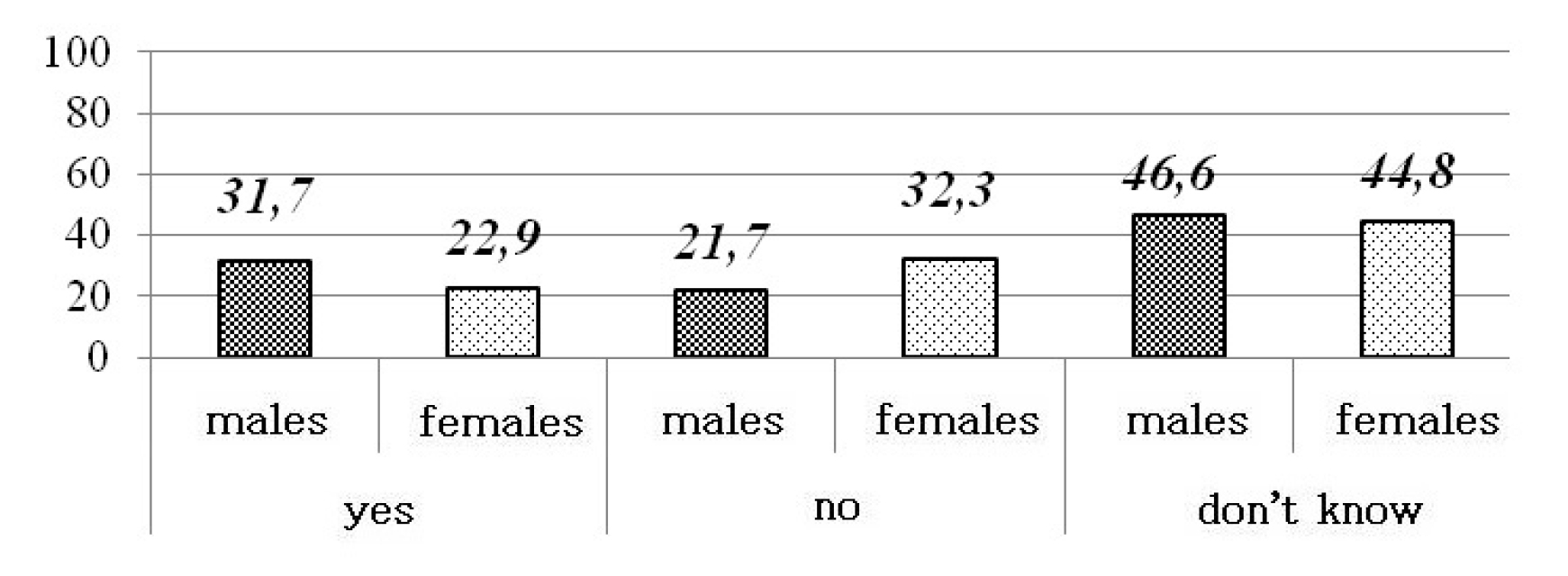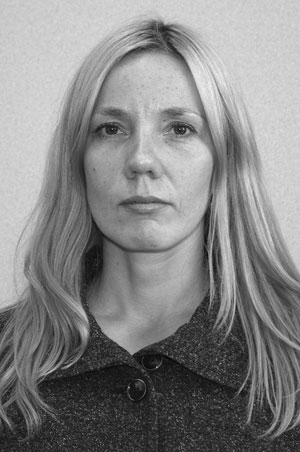Introducing students into competitive activity in context of holographic approach
Фотографии:
ˑ:
Associate professor, Ph.D. N.V. Peshkova1
Dr.Hab., professor L.I. Lubysheva2
1Surgut State University, Surgut
2Russian State University of Physical Culture, Sport, Youth and Tourism (GTsOLIFK), Moscow
Keywords: university sport, competitive activity, vitagenic experience, holographic approach.
Introduction. Lately, considerable changes have occurred in the understanding of university sport and competitive activities as its basic component, in the context of personal development of young people. In terms of globalization, urbanization, labor intensification and informatization in the modern society, sport is now recognized as a universal model of contest (competing with the opponents) and the most effective means of socialization filling the needs for identification and self-definition [3].
The significance of sport and its contribution to formation of personality characteristics of a young person are particularly relevant due to the fact that the adolescent students overcome psychological crisis and take charge of their own lives. According to V.I. Slobodchikov and E.I. Isaev, such a crisis is caused by the controversy over the ideal self and real self, so people cannot fully evaluate their actual attributes and characteristics. The authors consider the creative activities leading to personal changes and changing environmental factors to be the only means to preclude this controversy [6: p. 60].
To our recognition, it is competitive activity combined with practical training that provide a person with opportunities for self-actualization, overcoming weakness, comparing one’s capabilities with those of other peoples’, going through triumph of victory and bitterness of defeat. These factors contribute to formation of specific action patterns within society, establishment of personal reference points and criteria for gaining success, improving patience and building tolerance [1]. However, the formerly conducted studies showed that the attitude towards competitive activities is rather ambivalent: some students believe that they do not need a competitive although are engaged in sports and physical activities with a view of self-development [5]. As the case stands, it may be inferred that the sports potential remains ignored.
With reference to the subject mentioned above, we consider motivation of young people to active participation in university sports and competitive activities from the first day at university to be a relevant issue.
Objective of the study was to provide a theoretical justification and definition for the systematic method of activating and promoting positive attitudes of students towards competitive activity.
Materials and organisation of the research. The study was conducted at the premises of the Physical Education Department of Surgut State University in 2015 and was based on the opinion poll conducted among the first-year students. 563 students were surveyed (189 male and 374 female students enrolled into different bachelor and specialist degree programs; the respondents represented 45 cities and rural settlements).
Results and discussion. The results statistics for the question “Would you take part in the competitions held by Surgut State University” are given on the diagram 1 below.

Diagram 1. Student survey results on university competitions, %
The obtained data revealed low percentage of the first-year students willing to participate in various sports events from the first day of studying in university; besides the results corresponded to that of the poll regarding school sport competitions. At the time of enrollment, only 50.2 percent of males and 37.9 percent of females had competitive experience; these students constituted the group of respondents who answered affirmatively in 100 percent of cases. The analysis of obtained data shows incomplete correspondence of “willingness” and “experience of participation”, which tended to decrease by 18.5 percent (males) and 15 percent (females). We attribute this tendency to the period of adaptation to university environment, which students undergo while getting used to the new student community and living conditions. These factors may have adverse effect on students’ active involvement in competitive activities.
To our recognition, attention should be focused on the group of students who were unsure of their position on the issue. We credit the case to the fact that, while studying at school, these students were not involved in competitive activities and had no need for and interest in sports events and everything that is related to it. Thus, the “willingness-unwillingness” ratio variations depend directly on the organization of physical culture, recreational and mass sports activities in university, provided environments for active and enthusiastic participation in sports events, experiencing positive emotions through the competition process.
Within the framework of the study objectives, we consider it necessary to refer to the specifics of the vitagenic program developed by A.S. Belkin. The program is based on actualization of life experiences, intellectual and psychological potential of a person with a focus on the academic activities [2]. According to the author, vitagenic (life) experience is the knowledge and information obtained by a person, stored in long-term memory and which can be used effectively in an appropriate situation. It consists of a complex of thoughts, feelings, and experiences which are the important elements of a person’s identity and are connected with image, emotional and motor memory types [2].
The relevancy and necessity of vitagenic experience within an educational process is the basic mechanism of holographic approach (A.S. Belkin, N.A. Verbitskaya, K.A. Romanov). Holographic approach considers a certain object in the reflected multi-dimensional space, which is based on the three-dimensional structure, at least. As well as A.S. Belkin, we construe the holographic approach as the process of multi-dimensional and extensive interpretation of competitive activity which combines at least three projections with the vectors directed toward center.
Vitagenic projection is vitagenic information a teacher needs when teaching and interacting with students. Vector: student – information – teacher.
Didactic projection: information is channeled from a teacher to students, while the teacher interprets vitagenic information of the students. Vector: teacher – information – learning.
Generative projection: information is channeled from any supplementary source (vitagenic experience of other people, mass media, scientific data, consultation with specialists, etc.) and provides integral and cohesive image of the studied phenomenon. In the context of our study, it should be noted that student's life experience is useless if taken apart from the life experiences of the others (for instance, during the competition on a sports arena), when adherent points are available making it possible to realize the source of one’s own success or failure.
In view of the subject mentioned above, our understanding is that the first-year students, who had already been participating in sports activities before, do need it to be relevant; they also require actualization, new knowledge, positive emotions and experiences, opportunities for self-development, the proper environment stimulating the processes of self-education and self-improvement. Besides, vitagenic experiences of these students may become a generative projection for those students, who were never involved in competitive activities before.
It is necessary to provide the students, who had not gone through sports training drill, with environments for the transition of vitagenic information to life experience. According to A.S. Belkin, life experience is based on three phases: the first one is initial (undifferentiated information perception); the second one is evaluation and filtration of information (a person determines information value in terms of phylogeny, then decodes its pertinence in relation to oneself in terms of ontogeny); the third phase is attitudinal (a person unintentionally or consciously sets the attitude towards memorizing and acquiring information for a certain period of time) [2].
To our recognition, this approach should be implemented through involvement of the larger number of first-year students, first, into competitive activities within the sports-centered physical education process, then into various sport competitions. People can determine their priorities regarding university sports and become involved in competitive activities only through experiencing the triumph of victory or bitterness of defeat, discontent or satisfaction with the achieved results.
In view of this, the Physical Education Department in cooperation with the sport club is diversifying the range of health, fitness and mass sport activities in the university so that all students were involved into university sport, in one way or another, regardless of their initial physical fitness and sport experience [4].
Conclusion. We believe, addressing the problem of the students' involvement into competitive activities in view of the holographic approach presupposes consideration of vitagenic experiences of students; it makes them equal parties of the educational process in the field of physical culture and sports, provides opportunities for collaboration and co-creation, builds positive attitude and interest in sport activities.
References
- Alekseev P.V. Fizicheskaya kul'tura i sport v Rossiyskoy Federatsii: novye vyzovy sovremennosti: monografiya (Physical Culture and Sports in the Russian Federation: new challenges of modern time: monograph) / P.V. Alekseev, R.G. Gostev, Yu.V. Kuramshin, A.V. Lotonenko, L.I. Lubysheva, P.I. Filimonova. – Moscow: Teoriya i praktika fizicheskoy kul'tury i sporta, 2013. – 780 P.
- Belkin A.P. Osnovy vozrastnoy pedagogiki: ucheb. posobie (Fundamentals of developmental pedagogics: study guide) / A.P. Belkin. – Moscow: Akademiya, 2000. – 192 P.
- Lubysheva L.I. Novy kontseptual'ny podkhod k sovremennomu ponimaniyu sotsial'noy prirody sporta (New conceptual approach to modern understanding of social nature of sport) / L.I. Lubysheva, V.P. Mochenov // Teoriya i praktika fizicheskoy kultury. – 2015. – № 4. – P. 94–101.
- Peshkova, N.V. Novoe v sisteme upravleniya razvitiem studencheskogo sporta v Surgutskom gosudarstvennom universitete (Innovations in university sport development management system in Surgut State University) / N.V. Peshkova, L.I. Lubysheva, A.A. Peshkov, V.V. Apokin // Teoriya i praktika fizicheskoy kultury. – 2012. – № 11. – P. 85–87.
- Peshkova, N.V. Povedencheskaya strategiya v otnoshenii zdorov'ya u devushek, zanimayushchkihsya v ramkakh sportizatsii fizicheskogo vospitaniya razlichnymi vidami dvigatel'noy aktivnosti (Behavioral health strategy for girls involved in different types of motor activity within sportization of physical education) / N.V. Peshkova // Teoriya i praktika fizicheskoy kul'tury. – 2015. – № 9. – P. 89–91.
- Slobodchikov V.I. Osnovy psikhologicheskoy antropologii. Psikhologiya razvitiya cheloveka: Razvitie sub'ektivnoy real'nosti v ontogeneze (Fundamentals of psychological anthropology. Psychology of human development: development of subjective reality in ontogenesis) / V.I. Slobodchikov, E.I. Isaev. – Moscow: Shkol'naya Pressa, 2000. – 416 P.
Corresponding author: peshkova_ffk@mail.ru
Abstract
The article concerns the current issue related to finding the ways to introduce young people into university sports classes. The authors believe that this competitive activity and training for it creates conditions for a young man to improve and overcome himself, compare his abilities with the abilities of his peers, serves as the most effective way of socialization, that can meet the urgent need for identification and selfidentification.
At the same time the survey of firstyear students regarding their desire to participate in various university competitions revealed a quite low percentage of students, who are concerned to engage in competitive activity in various sports from the first day of studies at the university. And those firstyear students who agreed had the experience of participating in school competitions in 100% of cases.
In this regard, the authors concluded that the question of introducing students into competitive activity considered in the context of the holographic approach makes it possible to actualize the need to take into account the vitagenic experience of firstyear students, which creates conditions for equal interaction of the participants of the educational process in the sphere of physical culture and sports, promotes cooperation and cocreation, formation of the value attitude and interest in sport activities.



